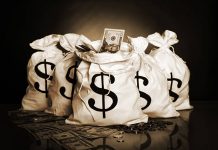The panic seems to be over. US stocks are back to record highs, Treasury yields have risen, Gold has sold off and equities across Asian and European markets are recovering from last week’s sell-off.
Interestingly though, no vaccine for the coronavirus which triggered the sell-offhas been discovered yet, withthe death toll jumping to 563 as of Wednesday night. Infections also continue to be on the rise with 2,987 new confirmed cases. So what is driving risk assets?
Multiple factors may have been attributed to the change in investors’ mood over the past couple of days. The latest economic data has highlighted a pick-up in global manufacturing and services activity, particularly in the US. State-owned Chinese companies are likely to intervene through buying stocks if markets experience a massive meltdown, hence preventing big investors from selling their holdings. But it is the expectation that central banks and governments are ready to ease monetary and fiscal policies which is contributing the most to the latest surge in risk assets. The People’s Bank of China has already pumped billions of Dollars into the financial system and Thailand’s central bank was the first to cut interest rates on Wednesday in response to the virus outbreak.
China’s announcement overnight that it would halve tariffs on more than 1,700 US products was the latest factor that pushed equities higher in the Asian session today. Whether this will translate into a “phase two” US-China trade agreement remains to be seen. However, this action was sufficient enough to lift investors’ sentiment.
Despite all the positivity seen in financial markets, risks remain high. We still do not know the exact impact of the coronavirus outbreak on the Chinese or global economy. If China’s growth drops by 1-2%, the shock will ripple globally and will definitely be reflected in corporate earnings.
While the yield on US 10-year Treasury Bonds hassurged 17 basis points over the past three days after touching 1.5%, it is still well below where it started the year. Bond investors require clear evidence that the worst is behind us to begin forecasting higher growth and it’s clear we’re not there yet. Copper is another leading indicator of the economic cycle and it remains 10% below mid-January levels. These asset classes need to see a significant recovery to reflect true optimism, otherwise we would expect to see further shocks to equity prices.












